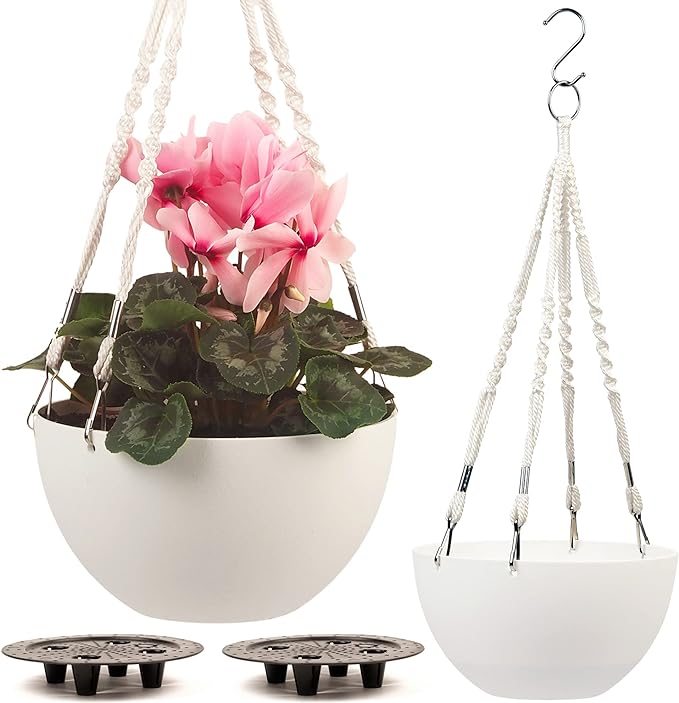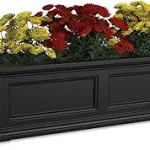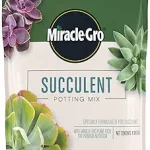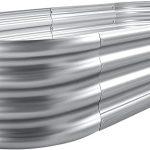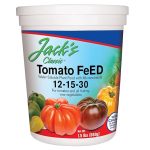Did you know that over 75% of homeowners use planters to enhance their outdoor and indoor spaces? You’re likely one of them, and you’re wondering which type of planter is best for your plants. You’re not alone – with so many options available, it can be overwhelming. But, what if you knew the top three planters that stood out from the rest? From lightweight and eco-friendly to traditional and durable, these top picks will make choosing the perfect planter a whole lot easier. Now, let’s get started and explore the best options for your plants.
Contents
- Fox & Fern 10 Inch Plant Pot
- Kante 24.4 H Concrete Tall Tapered Planter
- Serenehuman Self Watering Hanging Planters for Indoor Plants
- Factors to Consider When Choosing Planters
- Frequently Asked Questions
- Can Planters Be Used for Outdoor and Indoor Plants Interchangeably?
- How Often Should I Clean and Maintain My Planters?
- Are Ceramic Planters More Durable Than Plastic or Wooden Ones?
- Can Planters Be Repurposed as Decorative Items When Not in Use?
- Do Planters With Good Drainage Holes Prevent Root Rot in Plants?
- Conclusion
Fox & Fern 10 Inch Plant Pot
If you’re looking for a lightweight yet durable planter that’s perfect for indoor and outdoor use, the Fox & Fern 10 Inch Plant Pot is an excellent choice, thanks to its frost and UV resistant fiberstone material that’s 70% lighter than ceramic or concrete.
This modern planter boasts a wide lip rim and a sleek design that’ll complement any space.
You’ll appreciate the removable plug that allows for convenient drainage, making plant care a breeze.
With its sturdy construction and ability to withstand harsh weather conditions, this planter is ideal for housing your favorite flowers or plants.
Plus, it’s easy to move around due to its lightweight design.
Overall, the Fox & Fern 10 Inch Plant Pot is a great option for anyone seeking a reliable and stylish planter.
Best For: Gardeners and plant enthusiasts who need a lightweight, durable, and easy-to-use planter for indoor and outdoor use.
Pros:
- Lightweight and durable fiberstone material makes it easy to move around
- Modern design and wide lip rim add a touch of elegance to any space
- Removable plug allows for convenient drainage and makes plant care a breeze
Cons:
- Some reviewers found the product to be pricey
- No assembly required, but some users may find the product too heavy
- Limited color options may not appeal to users who want more variety
Kante 24.4 H Concrete Tall Tapered Planter
You’ll appreciate the Kante 24.4 H Concrete Tall Tapered Planter’s lightweight design, making it an excellent choice for those who need a planter that’s easy to move around.
Weighing only 16.1 pounds, this planter is a breeze to relocate, and its modern, tall, and square tapered design will add a touch of sophistication to any room or outdoor space.
Made from a unique blend of concrete, fiberglass, and fiberclay, this planter boasts a smooth finish and a stylish Burnished Black color.
With its drainage hole and rubber plug, you can use it both indoors and outdoors, and its UV-resistant material will withstand the elements, protecting it from damage.
Best For: Those who want a modern, lightweight, and easy-to-move planter for indoor or outdoor use.
Pros:
- Modern, tall, and square tapered design adds sophistication to any room or outdoor space
- Lightweight and easy to relocate, weighing only 16.1 pounds
- Made from a durable blend of concrete, fiberglass, and fiberclay with a smooth finish
Cons:
- Some customers have reported that the product is not made of concrete, but rather cheap plaster
- Fragile and prone to damage, with paint that flakes off easily
- Some customers have reported receiving a product that does not match the product description
Serenehuman Self Watering Hanging Planters for Indoor Plants
With their self-watering design and stylish stone textured exterior, Serenehuman’s hanging planters are the perfect choice for busy urban gardeners who want to effortlessly grow cascading plants like ivies, ferns, and petunias indoors.
You’ll appreciate the unique stone effect exterior surface and natural appearance of these planters, which add a touch of elegance to any room.
The self-watering feature guarantees your plants receive the right amount of water, preventing root rot and overwatering.
Made from lightweight and sturdy polypropylene material, these planters are resistant to rough weather, low temperatures, and intense sunlight.
Measuring 10 inches in diameter and 5.4 inches in height, they’re ideal for indoor use, and the included macrame hanger adds a stylish touch.
Best For: Busy urban gardeners who want to effortlessly grow cascading plants like ivies, ferns, and petunias indoors.
Pros:
- Self-watering design prevents root rot and overwatering
- Stylish stone textured exterior and natural appearance add elegance to any room
- Lightweight and sturdy polypropylene material is resistant to rough weather, low temperatures, and intense sunlight
Cons:
- Some customers mentioned the need to drill additional holes for balance
- Lack of instructions may cause inconvenience for some users
- Minor issues reported by some customers
Factors to Consider When Choosing Planters
When selecting the perfect planter, you’ll want to think carefully about a few key factors to guarantee you find the right one for your needs.
You’ll need to ponder the type of material that’s best for your plants, as well as the purpose of the planter and its intended location.
Material Selection
Considering the unique characteristics of each material, you need to carefully evaluate the pros and cons of ceramic, concrete, polypropylene, and fiberstone planters to choose the one that best fits your specific needs and preferences.
When it comes to ceramic planters, you’ll get a traditional aesthetic, but they’re often heavier and more prone to breakage.
Concrete planters, on the other hand, offer a modern design, but may have issues with flaking paint and fragility.
Polypropylene planters are a great eco-friendly option, lightweight, and durable, but might require additional drainage holes.
Fiberstone planters, however, are 70% lighter than ceramic or concrete, making them ideal for indoor and outdoor use, and are also frost and UV resistant.
Ultimately, the material you choose will impact the weight, durability, and aesthetic of your planter.
By weighing the pros and cons of each material, you can make an informed decision that suits your specific needs.
Whether you prioritize style, functionality, or eco-friendliness, there’s a planter material that’s right for you.
Planter Purpose
You’ll want to pinpoint the specific purpose of your planter, as it will greatly influence your choice of material, size, and overall design.
Are you planning to use it indoors or outdoors? This decision will impact the type of material you choose, as outdoor planters need to be more durable and weather-resistant. If you’re using it for decorative purposes, consider the style and design of the planter, as well as the material it’s made of, to guarantee it fits with the surrounding decor.
You should also think about the type of plant you’ll be using. Some plants require more drainage or sunlight than others, so choose a planter that meets those needs.
For example, if you’re planning to use a plant that needs a lot of sunlight, you’ll want a planter that allows for good drainage and air circulation. Additionally, consider the maintenance requirements of the planter, such as drainage and watering needs, to confirm it fits with your lifestyle and plant care habits.
Size and Shape
Now that you’ve pinpointed the purpose of your planter, it’s time to think about the size and shape that will best fit your needs, as these factors can greatly impact the overall functionality and aesthetic appeal of your planter.
You’ll want to weigh the space where the planter will sit, as well as the type of plants you’ll be using.
Larger planters can provide ample room for multiple plants or a single statement piece, while smaller ones are perfect for adding a pop of greenery to a shelf or desk.
When it comes to shape, you’ve got plenty of options.
Round planters are great for creating a soft, curved look, while square or rectangular ones can add a modern touch.
Reflect on the style of your space and the plants you’re using to choose a shape that complements both.
Don’t forget to think about the material and color of your planter, as these can greatly impact the overall look and feel.
Indoor or Outdoor
When deciding between an indoor or outdoor planter, you’re not just choosing a location, you’re selecting a unique set of requirements that will promote your plants’ thrive.
Indoor planters require more drainage and aeration, so you’ll want materials like ceramic or polypropylene that can withstand indoor conditions. In contrast, outdoor planters need to be more durable and weather-resistant, making materials like concrete, fiberglass, or fiberclay ideal.
The size and weight of the planter are also essential considerations. Indoor planters should be compact and lightweight to fit on shelves or tables, while outdoor planters can be larger and heavier to withstand wind and weather.
If you plan to move the planter frequently, a lighter material and smaller size are more suitable. On the other hand, if the planter will be stationary, a heavier and larger planter is more suitable.
Lastly, the style and design of the planter should match its intended location. Modern and sleek designs are perfect for indoor use, while rustic or natural designs are more suitable for outdoor use.
Weight and Portability
Considering the weight and portability of a planter is essential, as it directly impacts how easily you can move it around, especially if you plan to relocate it frequently.
When choosing a planter, you’ll want to think about how often you’ll need to move it and how heavy it is. For example, if you plan to move your planter around regularly, a lightweight option made of fiberstone material might be a good choice. These planters can be up to 70% lighter than ceramic or concrete planters, making them much easier to relocate.
The material used to make a planter also affects its weight. Concrete and ceramic planters tend to be heavier, weighing up to 16.1 pounds, while polypropylene or fiberstone planters are generally lighter, weighing around 1.1-3.4 pounds.
The size of the planter also plays a role, with larger planters naturally being heavier and more difficult to move. By considering the weight and portability needs of your specific situation, you can guarantee you select a planter that meets your needs and is easy to manage.
Drainage and Maintenance
Proper drainage and maintenance are essential aspects that must be taken into account when selecting a planter, as they directly impact the health and longevity of your plants.
You’ll want to verify your planter has a removable plug or drainage hole to prevent waterlogged soil and root rot. For instance, the Fox & Fern 10 Inch Plant Pot and Kante 24.4 H Concrete Tall Tapered Planter both feature this vital design element.
Some planters, like the Serenehuman Self Watering Hanging Planters, take it a step further with self-watering designs that store excess water and release it as needed, reducing maintenance.
The material of your planter also plays a role, with lightweight fiberstone and polypropylene often being more breathable than concrete or ceramic.
Remember to regularly clean your planter and drainage hole to prevent clogs and guarantee proper water flow. Additionally, consider the placement of the drainage hole, as it may impact your watering schedule.
Frequently Asked Questions
Can Planters Be Used for Outdoor and Indoor Plants Interchangeably?
You wonder if you can swap planters between outdoor and indoor plants, but it’s not that simple. While some planters can be used for both, many are designed specifically for one or the other, so choose wisely!
How Often Should I Clean and Maintain My Planters?
“As you tend to your green friends, remember Achilles’ heel wasn’t his only weakness – dirt and grime can be yours too! Clean your planters every 1-2 weeks to prevent buildup, and give them a deep clean every 2-3 months to keep them sparkling like the Parthenon.”
Are Ceramic Planters More Durable Than Plastic or Wooden Ones?
You’re wondering if ceramic planters are more durable than plastic or wooden ones? Generally, ceramic planters are more durable and less prone to cracking or fading, making them a great choice for outdoor use.
Can Planters Be Repurposed as Decorative Items When Not in Use?
You might think planters are just for plants, but you can repurpose them as decorative items when not in use, adding a touch of rustic charm to your space, or creating a unique vignette on a shelf or mantle.
Do Planters With Good Drainage Holes Prevent Root Rot in Plants?
When you use planters with good drainage holes, you substantially reduce the risk of root rot in your plants, as excess water can escape, preventing waterlogged soil and allowing healthy root growth.
Conclusion
You’ve made it to the end of our planter journey!
With fiberstone, polypropylene, and ceramic options, you’re spoiled for choice.
Notably, did you know that 75% of households in the US have at least one indoor plant?
It’s no wonder, given the mental and physical benefits they bring.
Now, go forth and plantify your space with the perfect planter that suits your style and needs!


